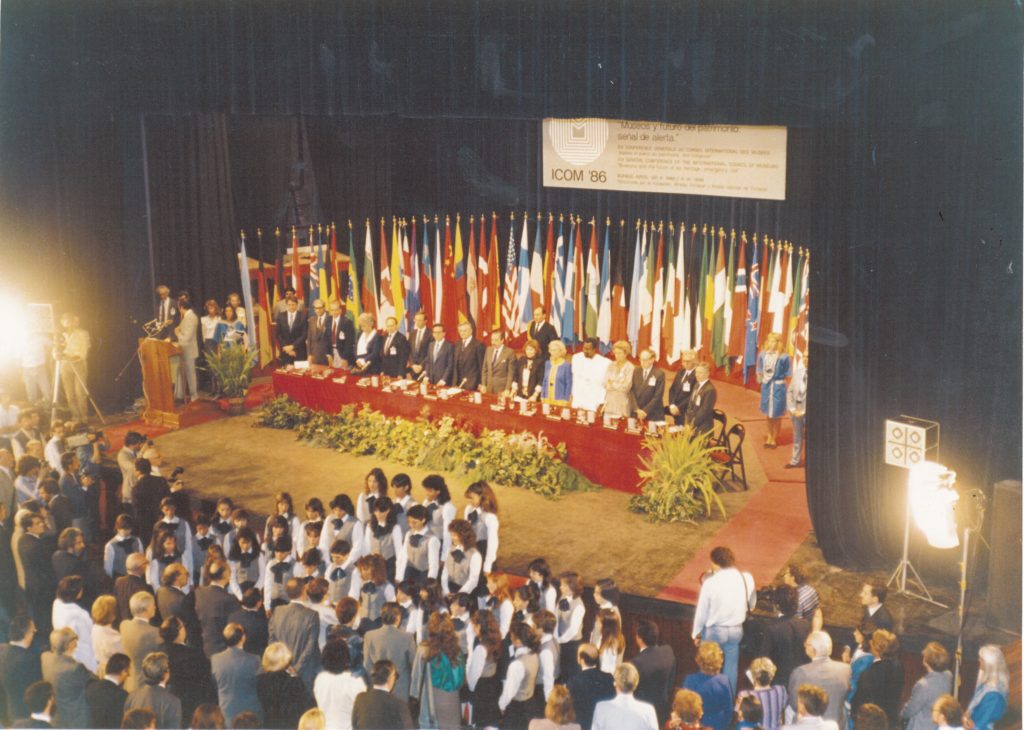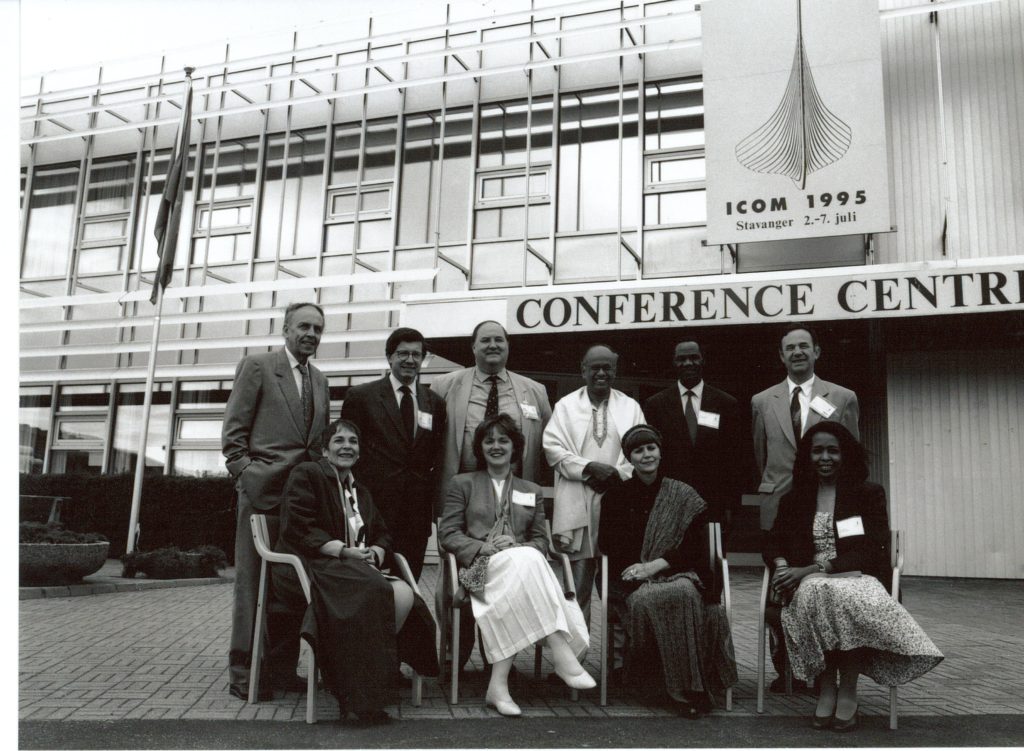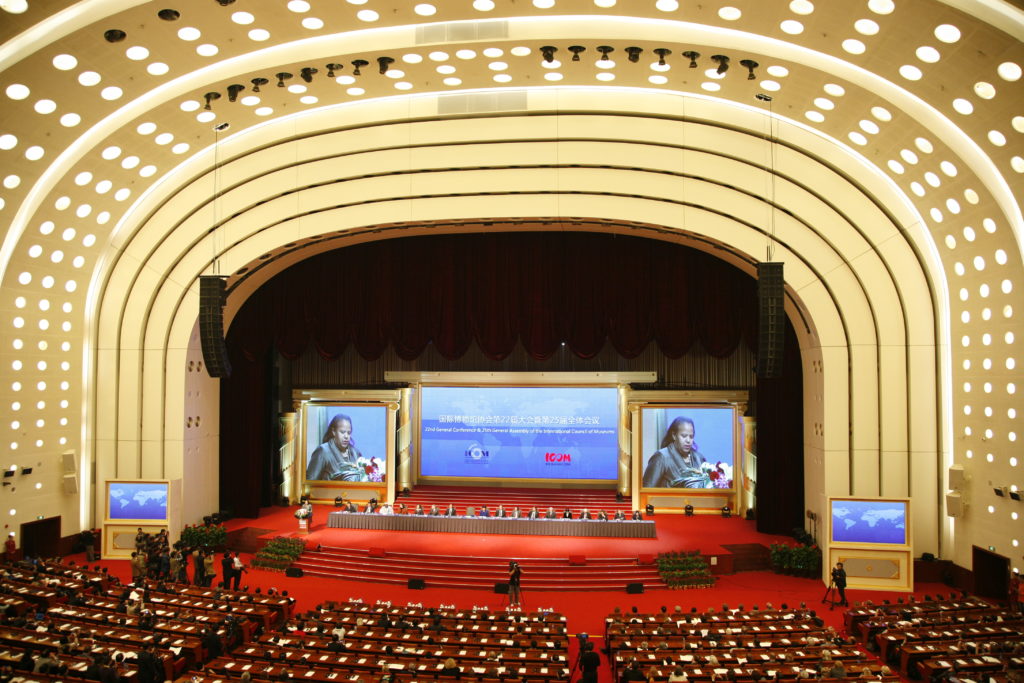History of ICOM

Over the years, ICOM has evolved in accordance with international museum professionals’ needs worldwide, keeping in mind its main mission. More than 60 years after its creation, the organisation continues to represent the global museum community.
1946 – 1947: ICOM is created
Within a year of its creation, two meetings marked the birth of the International Council of Museums. The first one took place in Paris on the occasion of ICOM’s creation at the initiative of Chauncey J. Hamlin (US), who became the first President of the organisation. The second meeting, the organisation’s first General Assembly, took place in Mexico.
1947 – 1968: ICOM grows up
ICOM’s first seven General Conferences were held between 1948 and 1965. During these years, the organisation developed its structure, its geographical representation, and its activities became increasingly professional and consistent. The last two General Conference (held at The Hague in 1962 and in New York in 1965) highlighted the needs and the enthusiasm of participants.
The three main concerns during this period were the educational role of museums, exhibitions, the international circulation of cultural goods and the conservation and restoration of cultural goods.
1968 – 1977: Crisis and transition years
By 1968, ICOM’s debt became chronic. While activities, projects and expenses continued to grow, membership dues were unchanged for eight years. Meanwhile, a new type of museum was unfolding, in line with the museum’s changing role in society. In the early 1970s, ICOM’s existence was put at risk. The only solution was to increase its own resources (its membership and corresponding dues), which put an end to this unfair and outmoded situation.
The Statutes were revised. Up to then the number of active members had been limited to 15 per National Committee. Following the General Conference in Grenoble in 1971, the idea was developed that ICOM should grant equal status to individual members and a reform was adopted in Copenhagen in 1974 whereby active members and associate members formed a single category. The democratic spirit prevailed and all members of the profession had the right to vote and stand for any ICOM function.

18 – 29 May 1977, 11th General Conference, Moscow-Leningrad, URSS
1977 – 1989: ICOM goes international
ICOM began to develop its activities in developing countries in 1977.
A resolution adopted in Moscow in 1977 provided support to Asian, African and Latin America developing countries for the training of museum staff and restorers. This addressed the need for skilled labour and conversation experts. It also promoted the circulation of technical equipment for conservation training.
Four decisive conferences in 1977, 1980, 1983 and 1986 enabled ICOM to fulfill two strategic goals:
- The finalisation of a policy on museums in the service of society and of its development;
- The adoption of a Code of Ethics, a reference document.

October 26 – November 4, 1986, 14th General Conference, Buenos Aires, Argentina
1989 – 1996: Efficiency and universality
ICOM’s financial situation became healthier and the deficit was absorbed in 1994. The fundraising policy was paving the way for a promising future.
ICOM’s reputation and global action helped to increase its visibility. This outcome was a just reward for half a century of efforts.
At a time when many international organisations were struggling with financial and structural problems, ICOM maintained the universality, flexibility and imagination that enabled it to meet the demands of the profession. The recommendations of the latest General Assemblies paved the way for cultural policy, reinforcing the idea that economic development and cultural factors were inseparable.

18th General Assembly of ICOM, Stavanger, Norway, 7 July 1995
1996 – 2004: A new era of activities
From 1996 on, ICOM reinforced its fight against the illicit traffic of cultural goods by developing the Red Lists and One Hundred Missing Objects series. Risk prevention activities related to natural or man-made disasters were accelerated with the Museum Emergency Program (MEP) launched in 2002 as well as ICOM’s participation in the International Council of the Blue Shield (ICBS).
With these developments, ICOM increased its presence in the global museum community and contemporary society.

ICOM’s 18th General Conference, 1998, Melbourne, Australia
2004 – today: ICOM opens up to Asia
ICOM created a new working group with a view to establishing a new strategy for the organisation. This Working Group produced a report titled A Tool Box for Renovating ICOM. Moreover, Running a museum: a practical handbook was designed for professionals and published by ICOM. It became a reference tool for the international museum community in training matters.
ICOM continued to develop activities in relation to the protection of cultural heritage, in particular with its active participation in the Blue Shield and the management of Object ID. Protecting intangible cultural heritage became an integral part of ICOM’s programme activities. All these elements contribute to ICOM’s institutional influence.
ICOM held its first General Conference in Asia in 2004 in Seoul, Korea. By doing so ICOM highlighted its wish to include the Asian continent more significantly in its organisation. This strategy was reinforced in 2010 through ICOM’s presence at the Shanghai World Expo and the organisation of its 2010 General Conference in Shanghai. After the General Conferences in Rio in 2013 and in Milan in 2016, ICOM continues to strengthen its presence in Asia, especially with the upcoming 2019 General Conference in Kyoto, Japan.


